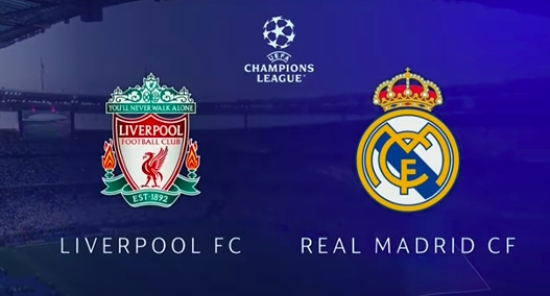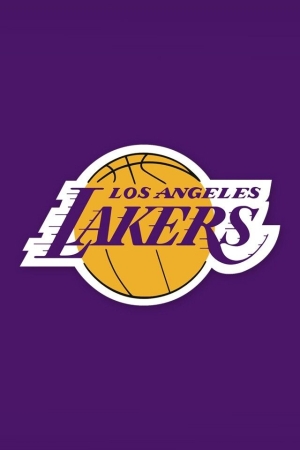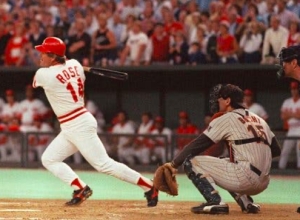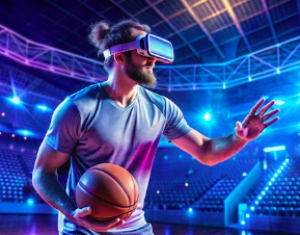How to Manage Volatility of Cryptocurrencies When Making Payments at Bookmakers and Casinos
Using cryptocurrency for betting at casinos and bookmakers can be exciting, but it comes with a big challenge: volatility. Crypto like Bitcoin has volatility in its price, which influences deposits and withdrawals. If you are interested in betting with crypto, learning how to deal with this fluctuation is crucial. This guide will demonstrate how to deal with these fast changes and get the most out of your crypto betting.
The Effects of Crypto Fluctuations on Betting
In fact, whenever you are betting using cryptocurrency, you are always at the mercy of the fluctuating value of the currency. For instance, if the Bitcoin price falls immediately before you deposit your coins, you stand to lose some value before you can bet. To at least somehow minimize the impact of cryptocurrency volatility, many use sites with high odds. After all, simply by registering on Melbet login, you get the opportunity to place bets at the most favorable odds on the market, which really affects your winnings! In general, another way to cope with fluctuations in the cryptocurrency market is to control the time at which you make a deposit. It is about noticing, realizing, and, most importantly, taking advantage of price changes in time.
Key Strategies to Manage Crypto Volatility
Gamblers need to take certain precautions whenever they make use of cryptocurrencies at online casinos. A couple of them may include making the following steps into practice in order to help mitigate the swings and call the trends instead of being called by them:
- Monitor the Market: Track the prices of the coins to establish when to make deposits and when to take out money
- Invest in Stablecoins: There are certain cryptocurrencies, such as USDT, which are pegged to the US dollar, and as such, less risk is involved.
- Put a Cap on Spending: Specify the maximum amount that you are inclined to spend, regardless of fluctuations in the market.
- Spread Your Assets: Never keep your entire investment in one particular form of cryptocurrency.
- Best Timing for Exchange: Exchange your crypto into fiat when the exchange rates are most favorable
With the implementation of these recommendations, your funds will be secured, and you can place wagers using cryptocurrency with minimum fear of unpredictable value loss. It is the preparation and timely acquisition of information that matters.
Keeping Up to Date with Social Media
Social media is one of the most effective tools for knowing the price of crypto and the available betting options. Pages such as Melbet Instagram can help you be aware of the current promotions and the latest events in the sports sphere. The fact of receiving any info as one of the first allows you to make wiser bets. And if you like crypto betting, you will be able to find exclusive bonuses there with the best coefficients. This way, you are ready for any changes in the market, and you catch the opportunities early enough, which makes your betting experience so much easier.
Selecting the Right Time to Deposit with Crypto
Timing is even more critical when you deposit using cryptocurrency. If you deposit during a high, you will be able to enjoy a higher value of the cryptocurrency. But if prices go down before you have deposited your money, you stand to lose big time. That is why many bettors use stablecoins such as USDT, which are pegged to the US dollar, and their value does not change much. The risk is high if you choose the wrong time to make your deposit or cash out your winnings. One should always be informed about the market and act according to what is going on in the crypto space.
Advantages of Deposit Through Stablecoins
Stablecoins are better and less dangerous than the rest of the cryptocurrencies. This value unit is linked to other national currencies and, therefore, does not fluctuate so much. Here are some of the advantages of using stablecoins at gambling sites:
- Less Uncertainty: Stablecoins have stable values, and risk is averted
- Less Volatility: There is lesser fluctuation and thus less planning chaos
- Convenience: All casino sites accept popular stablecoins as payment, which eases the process
- Quick Transactions: The processing time for stablecoins is short
- Less Exposure Risk: Stable currency holdings allow wise risk management
These benefits will appeal to all gamblers who wish to engage in crypto betting without great concerns about market dynamics. It is an easier way to experience betting using virtual currencies.
Key Points Worth Noting
While managing active volatility associated with cryptocurrencies, these factors should be kept in mind for money protection. Comparison of these aspects helps navigate the hazards in a better way:
- Market Timing: It helps to deposit when the prices are smaller and withdraw the same when the prices are high
- Exchange Fees: Assess all exchange fees as some of them do provide conversion of one crypto to another at high costs
- Crypto News: The prices tend to change considerably due to news. This means that one has to be informed all the time
- Security: Having your cryptocurrency on exchanges is not safe. Make sure you load it in safe wallets.
- Backup Funds: It is quite reasonable to keep some of the money in the fiat currency or stablecoins as a backup
Considering these points makes managing crypto deposits less stressful. As people seeking enjoyment, being careful and well-prepared will ease and add enjoyment in the process.
Conclusion: Raise Your Decision-Making with Crypto Banking
If you understand how to manage volatility very well, then you will really enjoy and profit from cryptocurrency deposits to betting platforms. As you analyze the market, make use of stablecoins, and receive information, you can also make intelligent choices and mitigate dangers. Though cryptocurrency comes with a degree of flexibility, you have to be careful with the cash. With these strategies in line, you are all set to enjoy betting using cryptocurrency without losing control over your finances. Always watch the marketplace and strategize creatively so that you can have a pleasant experience of crypto betting!
Who are the key players to watch out for in the Liverpool-Real Madrid clash?
The UCL fifth round brings together two of the most successful teams in European club football, with Liverpool taking on Real Madrid. This titanic tussle will see the Spanish Capital club and reigning champions take on England's most iconic team on this stage. Let's quickly get into the details and key information of this highly anticipated UCL match.
Match Info
Home Team: Liverpool FC
Away Team: Real Madrid FC
Venue: Anfield
Date: November 27, 2024
Team stats, league performance and key players
Liverpool FC
The club from the red side of Merseyside are firing on all cylinders at the moment, with new manager Arne Slot picking the torch from departed German tactician Jurgen Klopp. This has resulted in a perfect campaign so far, with four wins from four, propelling them to the summit of the UCL standing in the new look league phase format. These wins are all the more impressive when you consider the calibre of opposition they have dispatched, including the likes of AC Milan, RB Leipzig and Bayer Leverkusen. They also boast the best defence, with only one goal conceded so far.
Key players to watch out for include the likes of Talismanic Mohamed Salah and the defensive duo Alexander Arnold and Captain Virgil Van Dijk, among others, in this star-studded team.
Real Madrid FC
Real Madrid have so far been a shadow of themselves this season, with their struggles well highlighted by two losses in four games. Losing to the likes of Lille and AC Milan at home is less than ideal, as these are teams they should beat easily. Carlo Ancelotti has found it hard to replace the midfield control of the retired Toni Kross, and a long-term injury to first-choice right-back Dani Carvajal has weakened the defence of the defending champions.
The signing of Kylian Mbappe has yet to produce the desired results, with the French star still finding his footing and the coach figuring out how best to utilize the player in a squad brimming with talent. The likes of Ballon D'or runner up Vini Junior, England midfield maestro Jude Bellingham and the so-far quiet but lethal Kylian Mbappe are worth keeping a close eye on in this crunch fixture.
Match prediction and picks
A quick look at the head-to-head shows the positives for the Anfield faithful end here, with the Spanish giants finding more joy historically. There have been 11 UCL matches between these giants of European football in the past. Los Blancos have won seven of the last eight matches with only a goalless draw in that sequence. The Red's only success against this opponent came in their first three games.
This season, however, Liverpool have been a very solid outfit, with three clean sheets from four matches, including all two home matches. Real Madrid also lost their only away match without scoring in a lone goal loss away to Lille. In the last five meetings in Anfield, both teams have found the net only once, with four matches where only one team scored on the day. With Bet365 offering 2.50 odd for no BTS, it looks like good value. If you are looking to bank on Real Madrid and their experience in such big matches, then a Real Madrid win at 3.60 odds looks good. You can visit Cheekypunter for experience and complete evaluation of this bookmaker.
Football fans around the world will be eagerly anticipating this heavyweight clash in the upcoming UCL round. The calibre of players who will be on display promises a match that can go down in history as one of the best nights in Champions League football in recent times.
Controversial NFL Hall of Fame Inductions: Legends or Lucky?
Key Takeaways
- Controversial inductions often arise when a player's fame outweighs their stats.
- The selection process can be muddled by unclear criteria and a lack of diversity.
- Era differences and biases can affect who gets in and who doesn't.
- Public perception plays a significant role in how these decisions are viewed.
Controversial NFL Hall of Fame Inductions: Are They Justified?
What makes an induction controversial? Typically, it's when a player's fame or a single memorable moment seems to overshadow their overall career performance. The Hall of Fame selection committee uses specific criteria, but sometimes personal biases and historical context can cloud these judgments.
Notable Controversial Inductions Based on Statistics and Performance
Joe Namath
Joe Namath is a classic example. His career stats—a 62-63-4 record, 50.1% completion rate, 173 touchdowns, and 220 interceptions—are not Hall of Fame material by today's standards. Yet, his bold guarantee and victory in Super Bowl III left an indelible mark on NFL history. Was it fame over skill?
Art Monk
Art Monk's induction also raises eyebrows. While his career was long and productive, his three Pro Bowl appearances seem low for a Hall of Famer. His success in three Super Bowls likely helped his case. But should longevity alone earn a spot in Canton?
Bob Hayes
Bob Hayes had blinding speed and early success but didn't sustain it. His 371 receptions and 71 touchdowns are modest compared to other Hall of Fame receivers. Did his early career brilliance and a Super Bowl win overshadow his later years?
Lynn Swann
Lynn Swann dazzled in the Super Bowl, but his career stats—336 receptions, 5,462 yards, and 51 touchdowns—don't scream Hall of Fame. His induction is a testament to the weight of Super Bowl performances. But is it fair to prioritize a few games over a whole career?
Issues with the Selection Process
Diversity in the Selection Committee
The selection committee's makeup can influence who gets inducted. More diversity, including former players and coaches, could bring varied perspectives and reduce biases. Wouldn't a broader committee better reflect the game's history?
Clear Criteria for Selection
A standardized framework for evaluating candidates could help. Clear criteria would make it easier to judge who truly deserves a spot in the Hall. Shouldn't there be a more transparent process?
Backlog of Deserving Players
Many players wait years for induction, creating a backlog. Positions like wide receiver are particularly crowded. Could clearer criteria help speed up this process?
Senior Nominees and Their Controversies
Chris Hanburger
Chris Hanburger's induction as a senior nominee came after years of being overlooked. With nine Pro Bowl appearances, his career was solid, but not outstanding. Was his senior nomination fair, or did it bypass the usual scrutiny?
Roger Wehrli
Roger Wehrli's case is similar. He wasn't seen as elite during his career, yet he made it as a senior nominee. Does his induction highlight flaws in the senior nomination process?
Coaches and Contributors: A Different Standard
Dick LeBeau
Dick LeBeau is known more for his coaching prowess than his playing days. With 62 interceptions, his playing stats are respectable but not extraordinary. Should his coaching success have been the main factor for his induction?
Marty Schottenheimer
Marty Schottenheimer's exclusion is puzzling. Despite a successful coaching career, he remains outside the Hall. Does his absence highlight inconsistencies in how coaches and contributors are evaluated?
Historical Context and Performance in Different Eras
Era Considerations
Players from different eras face varying standards. What was considered great decades ago might not hold up today. How do we fairly compare players from different times?
Super Bowl Era Bias
Some players from the Super Bowl era were overlooked initially but later inducted as seniors. Does this reflect a bias towards more recent players?
Notable Snubs and Their Impact
Steve Smith Sr.
Steve Smith Sr. boasts impressive stats and longevity, yet he remains snubbed. Is there a bias against certain positions or players from less successful teams?
Willie Anderson
Willie Anderson was a top offensive tackle but played on underperforming teams. How much should team success influence individual recognition?
Randy Gradishar
Randy Gradishar waited 35 years for induction despite a stellar career. Does his long wait reflect broader issues in the selection process?
Torry Holt
Torry Holt's continued snubbing is baffling given his strong career stats. What more does he need to prove his worthiness?
Public and Media Perception
Many Hall of Fame decisions face public and media dissent. Fans often debate the worthiness of inductees, highlighting the subjective nature of these selections. Are fans' voices being heard enough?
Subjective Nature of Selections
Opinions on player worthiness vary widely. How can the Hall of Fame balance these differing views to maintain its credibility?
Betting Lines and Hall of Fame Predictions
With the ongoing debate over who truly deserves a spot in Canton, many fans and analysts turn to metrics and predictive odds, much like those seen in FanDuel lines. These betting lines often reflect public sentiment, highlighting the players whose legacies resonate most with fans and bettors alike.
Just as in sports betting, where stats, standout moments, and subjective factors impact odds, the Hall of Fame selection process mirrors this balance of data and emotion—keeping fans invested in the ever-evolving Hall of Fame discussions.
Conclusion
Controversial inductions spark debate and keep the NFL Hall of Fame in the spotlight. They challenge us to consider what truly makes a player legendary. As the Hall evolves, will it find a way to balance fame, stats, and historical impact more effectively?
How to Move the Things That Hold Our Greatest Memories
When we think about moving, the focus often falls on logistics—packing boxes, organizing, and ensuring everything makes it to the new location safely. However, some items in our homes carry far more than just physical weight; they hold memories, emotions, and connections to the past. From family heirlooms to sports memorabilia, vintage records, and treasured trophies, these are the things that define our personal history. Ensuring these items are moved with care is not just about avoiding damage but about preserving the stories and moments they represent. Here's how to move the things that hold our greatest memories with the respect they deserve.
- Plan Ahead and Take Inventory
The first step in moving meaningful possessions is to plan ahead. Create a detailed inventory of all the items that have sentimental value. This includes everything from framed photos, awards, sports memorabilia, and vintage collections to family keepsakes passed down through generations.
By documenting each piece, you'll not only be more organized during the move but you'll also be able to prioritize which items require the most protection. Take photographs of each item before packing to ensure you have a visual record of their condition, which can be especially helpful if you're hiring professional movers or filing insurance claims.
- Pack with Care
Packing items that hold your greatest memories is different from packing everyday items. Take your time with each piece, handling it gently and ensuring it's protected from every angle. If you're moving framed items, place corner protectors on each frame to avoid damage, and be sure to pack them upright to minimize pressure on the glass.
When it comes to sports memorabilia—like signed jerseys, balls, or equipment—use airtight containers to keep dust, moisture, and dirt from compromising their condition. For vintage collectibles like records, comic books, or trading cards, protective sleeves or cases are essential to preserve their value.
- Hire Professionals for Special Items
For particularly valuable or fragile items, hiring professional movers who specialize in handling delicate possessions is often a wise choice. Many moving companies offer specialty services for items such as musical instruments, sports equipment, and antiques. These experts know how to transport high-value items safely and securely, ensuring they arrive at your new home in the same condition as when they left.
Services like www.shiply.com are especially helpful when moving fragile or high-value items. They connect you with trusted movers who understand the specific needs of handling valuable items, from sports memorabilia to antique furniture, making sure they are transported with utmost care and precision.
In some cases, moving companies can even provide climate-controlled transportation, which is crucial for items sensitive to temperature and humidity changes, like vintage clothing, rare books, or sports memorabilia.
- Ensure Items Are Insured
While it's difficult to put a price on items that hold sentimental value, it's important to ensure they are protected financially during the move. Whether you're transporting a signed Hall of Fame jersey or a family heirloom that's been passed down for generations, check with your insurance provider to see if these items are covered during the move. If they're not, you may need to purchase additional moving insurance specifically for high-value possessions.
Taking this step offers peace of mind, knowing that even in the event of an accident, you have a backup plan to repair or replace items that may get damaged.
- Keep Sentimental Items Close
For smaller, especially meaningful items—like your first baseball glove, a trophy from a major achievement, or a keepsake from a historic sports event—you may want to keep them with you during the move. Pack these items in a separate, clearly marked box and transport them in your own vehicle rather than in the moving truck. By keeping your most cherished items close, you'll reduce the anxiety that can come with entrusting them to others.
This also applies to personal memorabilia such as family photo albums or scrapbooks. These are the items that cannot be replaced, making it essential to give them extra attention and care during the move.
- Unpack Mindfully
Unpacking treasured items requires the same level of care as packing them. Set aside a quiet time to unpack these special items first so you can ensure they are placed in a safe spot in your new home. As you unpack each item, inspect it to make sure it hasn't been damaged in transit.
When deciding where to place these cherished possessions in your new space, think about how they'll be displayed. Incorporating these items into your new home will help you feel more connected to the space, allowing your memories to live on and creating a new chapter for these cherished objects.
Conclusion
Moving the things that hold your greatest memories is more than just transporting objects—it's about safeguarding the moments and experiences that shaped your life. With careful planning, proper packing techniques, and a thoughtful approach, you can ensure that your most treasured items make the journey safely to your new home. These items represent your personal history, and by moving them with care, you preserve not just the physical items but the priceless memories they hold.
Trends in UK Online Casino Sponsorships for 2024
Within the last ten years, there has been an increased growth of online casino sponsorships in tandem with the growth in the online gambling industry. Online casinos started shifting to the sports and entertainment sectors as giant arenas that could present them with opportunities to increase their visibility and reach to consumers.
These sponsorships are undergoing changes in 2024: shifting regulations, changing consumer behaviors, and emerging technologies.
The Increasing Influence of Online Casinos in Sponsorship
One thing that stands out in the trends of 2024 is how online casino sponsorships seem to be booming within mainstream sports and entertainment events. As digital platforms continue to grow, online casinos will find new ways to include their brand in all live sports broadcasts, esports tournaments, and even music festivals.
The exposure that such partnerships give online casinos helps them attract a large demographic, a digitally savvy youth demographic who is no stranger to mobile gaming apps. Other strategic moves to bypass restrictions on advertising have been the involvement of online casinos in key sponsorship deals.
While regulators begin to rein in tightly on direct advertising, sponsorship is another avenue through which casinos can maintain their brand presence and reach out to fans through indirect but highly effective means.
Shifting Regulations and Their Impact
In 2024, regulatory frameworks have changed, creating both challenges and opportunities for development. The rigid rules associated with the practice of advertising, particularly sports events, made online casinos reconsider their approach to sponsorship.
The UK Gambling Commission has issued updated policies aimed at ensuring responsible gambling and protection for vulnerable people. Online casinos focus on promoting safer gambling messages through their sponsorship activity, being transparent in this respect and taking care of players.
Apart from that, some leagues and associations followed the sponsorship methodology that added ethics to choosing sponsorship from companies that advocate for responsible gaming. It guided them to choose casinos as sponsors, where social responsibility would be a major determinant in giving out lucrative sponsorships deals.
Expansion Beyond Traditional Sports
While football has long been considered the favorite sport when it comes to sponsorship by online casinos, 2024 saw a huge expansion into other fields. One of the biggest growth areas is esports. With its global fan base and younger demographic, esports offers another important demographic to online casinos.
Of late, it has become familiar to sponsor esports teams, tournaments, and streaming platforms—opening casinos to a very tech-savvy audience that can be more easily introduced to digital entertainment services.
Despite this, online casino sponsorship further covers entertainment events in the form of music festivals, concerts, and famous YouTube channels. Other sponsorship platforms give casinos the opportunity to go above the sports sphere to other market segments and have wider brand awareness in other arenas.
Technology's Role in Enhancing Sponsorships
This is another of the trends of new technologies, including AI, data analytics, and virtual reality, which outline how sponsorships will be structured and delivered. Online casinos have increasingly sought to capitalize on this trend in their own quest to create innovative and immersive experiences for audiences.
AI-driven algorithms allow casinos to tailor content to individual preferences, ensuring their messages hit and touch exactly the right audience at exactly the right times. Virtual and augmented reality continues to play a role in raising engagement about sponsorships.
Some casinos test virtual sponsorships in the metaverse or even offer live virtual events where entertainment melds with wagering experiences. This is the tech-heavy way of allowing the increase in visibility of casino brands themselves, all while allowing for new, more engaging ways for fans to interact with sponsors.
Growing Focus on Player Engagement and Loyalty
Another trend that will shape online casino sponsorships in 2024 is a focus on player engagement and loyalty. Many online casinos treat sponsorships as extensions of more comprehensive loyalty schemes, offering special benefits for fans who interact with their sponsored content.
Whether this involves providing VIP access to events, personalized gaming sessions, or bespoke merchandise, casinos use such strategic partnerships as a means of engaging their clientele in new ways.
These initiatives build community and brand loyalty for both the sponsor and the sponsored through such an initiative.
In Closing
As a result, online casino sponsorships enter a new exciting phase in the UK in 2024, driven by changes in regulation around technology and an increasing focus on player engagement.
This diversifies the landscape, and it gets tougher; casinos try to think of creative ways to stay in sports and entertainment while serving the greater good for responsible gambling.
From esports to music festivals and from virtual reality, the trends that cut a mold for the industry in 2024 go far beyond and deeper into the core of everyday entertainment. Successful adaptation to new regulations and the creative deployment of state-of-the-art technology to interface with crowds will define a successful casino.
Sports Halls of Fame Collaborations with Betting Companies: A New Era of Fan Engagement
The rise of sports betting is reshaping how fans engage with the games, teams and athletes they love. And that, in turn, is ushering in a new era of sports halls of fame. Formerly hallowed halls meant to celebrate athletic excellence, sports industry halls of fame are increasingly partnering with betting companies as they attempt to drive visitor and viewership traffic — relishing in the endless possibilities generated by a new generation of fans who value digital experience over legacy brand appeals. What kind of opportunities might it create, such as literally strolling through milestone events in history, unlocking memorabilia previously not available to public viewing or potentially even probability-based events focusing on Hall of Fame Achievements? In addition to that, platforms like Sportscasting. com does a great job of connecting sports fans to these fresh experiences and maintaining the extension between sports betting and legacy.
1. Bridging the Gap: Honoring History Through Interactive Experiences
Halls of fame from Cooperstown to Canton have traditionally served the purpose of preserving and showcasing the legacies of elite athletes. Now, with sports betting in a period of rapid growth, these institutions are reimagining fan engagement through a new generation of history brought to life by interactive betting partnerships. This would involve being able to see those eternal sports moments in another dimension, such as betting on a simulation or replay of famous games or getting the results of virtual leagues based on Hall of Fame moments. A gambling site would feature "odds," for example, on virtual matches between historic players or predict outcomes based on famous plays. It is this combination of tradition and modernity, really, that appeals to the traditional sports fan and to the modernist betting enthusiasts a little of the best of both worlds.
2. Sportscasting.com and the Role of Comprehensive Sports Analysis
Sites like Sportscasting.com flex the muscles of data analytics in sports, connecting fans with a major development that bridges the gap from yesteryear to modern times. By deeply analyzing players' statistics, the outcome of games, and even the odds of betting on a game, Sportscasting.com, which can be found here https://www.sportscasting.com/betting-sites/california/, equips the fans with valuable tidbits on everything from football and basketball to less-covered sports. For instance, readers may find articles comparing Hall of Fame statistics with current sports odds to consider how the performances of Hall of Famers would play out in today's sports betting environment. This deep analysis will resonate with a dedicated audience seeking to appreciate how historical performances might link up with contemporary betting opportunities.
3. Betting Companies and Their Role in Expanding Hall of Fame Narratives
With halls of fame, sports betting companies find a different kind of brand-building opportunity. Betting companies reach into the rich histories of Hall of Fame athletes to further their own credibility and create marketing campaigns focused on nostalgia. Such promotions can be made on the anniversaries of famous Hall of Fame inductions or major milestones; and provide special odds on historic athletes. This strategy would entertain the die-hard fans who idolize the athletes but even more so grab the attention of younger audiences, likely feeling closer to these legendary players through these designed experiences. The promotions may come in bets associated with the anniversaries of Hall of Famers or challenges motivated by famous moments within the sport. This rejuvenates those memories while actively involving the betting crowd.
4. Virtual Experiences and Augmented Reality (AR) Tours
AR has taken that possibility to the next level for interactive experiences within halls of fame. Along with a gambling partner, AR could let fans experience moments of legends from angles previously unimaginable. Picture this: you are walking down the Cooperstown halls and seeing before your eyes the materialization of Babe Ruth's legendary 60th home run, with augmented options to place bets on things like, "Would Babe Ruth hit this home run today? or "What would be the final score in a game featuring Ruth and another Hall of Fame slugger?" These hands-on exhibits ingeniously weave history with prop betting for a truly immersive journey through sports history. Websites such as Sportscasting.com report current stories as they happen to keep the fans updated on these kinds of digital developments. The websites also run articles on field current trends and technological advances so that fans are updated on what innovative experiences and partnerships treat a bet as a part of sports history.
5. Exclusive Betting Markets and Memorabilia Access
Some halls of fame give special access to memorabilia or create special experiences for fans who utilize their betting partners. In conjunction with Hall of Fame events, such as all-star games, reunion games, or special Hall of Fame induction games, betting companies will often introduce limited markets or speciality bets surrounding these events. Examples of such bets, which engage fans, include Hall of Fame reunion game bets, such as which veteran player will score first, and team bets concerning famous rivalries.
This gives more money to both halls of fame and betting companies in this way increasing fan interaction as well. We felt this form of VIP access would help fans interact on a more substantial level with Hall of Fame moments and provide some camaraderie around these historic moments perhaps not otherwise seen even outside of the wager.
The Role of Popular Culture in the Evolution of Sports and Entertainment
Over the past few decades, sports and entertainment have become deeply intertwined with popular culture, influencing each other in ways that have reshaped both industries. The rise of global sports icons, the explosion of streaming platforms and the blending of traditional sports with e-sports and other forms of entertainment have shifted how fans experience their favourite pastimes. Let’s see how popular culture has driven this evolution and what it means for the future of both sports and entertainment.
The fusion of sports and popular culture
Sports have always been a key part of cultural identity but, over time, the lines between sports and entertainment have blurred. Historically, athletes were seen as representatives of skill and physical prowess, but today they are as much a part of pop culture as musicians, actors and social media influencers. This shift has expanded the influence of sports beyond stadiums and arenas, embedding it into fashion, music and even digital platforms.
Athletes like Michael Jordan, Cristiano Ronaldo and Serena Williams have transcended their respective sports, becoming global symbols of success, dedication and style. Their visibility has been amplified by endorsements, appearances in films and even the development of personal brands that influence everything from sneaker trends to charity movements. In the 1990s, for example, Michael Jordan’s collaboration with Nike to create the Air Jordan sneakers changed the landscape of both sportswear and street fashion, demonstrating the power of this fusion.
At the same time, movies, TV shows and video games have brought sports to a wider audience. Films like Rocky, Space Jam, or more recently Creed not only celebrate the athletic pursuit but also play into broader cultural narratives about personal triumph and social justice.
The rise of new sports platforms
But another significant factor in this evolution is the shift from traditional broadcasting to digital and streaming platforms. Services like Netflix, Amazon Prime and YouTube, for example, have changed the way that people consume sports and entertainment, offering both live events and in-depth behind-the-scenes content. Documentaries like The Last Dance or Drive to Survive have become massive cultural phenomena, shedding light on the personal lives of athletes and the intense drama behind their successes and failures.
These platforms have also democratized sports, making niche events and lesser-known competitions accessible to a global audience. This has fueled the growth of sports like mixed martial arts (MMA), which gained popularity partly due to its exposure on platforms like YouTube. By merging reality TV elements with traditional sports narratives, MMA shows like The Ultimate Fighter brought drama and competition together, drawing in both hardcore fans and casual viewers.
Technology and virtual reality in sports and entertainment
Continuous technological progress is further transforming the intersection of sports and entertainment. Virtual reality (VR) and augmented reality (AR) are just beginning to offer fans immersive experiences that were once unimaginable. Through VR headsets, fans can now watch games from the perspective of players, virtually attend matches in real-time or even "sit" courtside from the comfort of their homes, just as they already can do when entering digital casino rooms and playing online slots simultaneously with other passionate players, in an experience which mixes the traditional emotions of these places with the potentiality of new technologies.
At the same time, AR tools are enhancing in-stadium experiences by overlaying stats, replays and other interactive elements over the live action. This trend is likely to accelerate in the coming years as 5G technology improves, offering lower latency and higher bandwidth for real-time streaming and interactive experiences.
One particularly interesting area where this intersection of tech and culture can be seen is in the rise of eSports. Competitive gaming has transformed into a spectator sport in its own right, with millions of fans tuning in to platforms like Twitch to watch tournaments of games like League of Legends or Fortnite. The blend of sports, entertainment, and gaming culture has made eSports a growing force in the entertainment industry, with some predicting it could one day rival traditional sports in terms of viewership and revenue.
The future of sports and entertainment in the digital era
The relationship between sports and popular culture will continue to evolve as new technologies and platforms emerge. The rise of the metaverse - a collective virtual shared space - may further blur the lines between sports, entertainment and gaming, offering fans entirely new ways to engage with their favorite sports and athletes.
As sports become more integrated with digital experiences, fan participation will likely grow. From virtual fan zones to interactive player interviews, the future promises to offer a seamless blend of live events, digital engagement and personalized experiences.
So, popular culture has not only expanded the reach of sports but has also transformed them into a multi-dimensional entertainment experience. Whether through virtual reality, eSports or online gaming, the future of sports entertainment is therefore poised to be more immersive, interactive and exciting than ever before.
Borja Mera: How Became a Sponsor of the Los Angeles Lakers: A Journey to Inspire Entrepreneurs
One of the most effective ways to inspire other entrepreneurs is by sharing our story—how we, as a brand, managed to sponsor the Los Angeles Lakers and what it signifies for us. My name is Borja Mera and at Siroko, inspiring others has always been at the core of what we do, encapsulated in our motto, #InspireOthers. For me, Siroko represents more than just a business; it’s about motivating people to follow their dreams, no matter the path they choose.
The journey to this incredible milestone began with a simple yet significant step: overcoming a personal fear. I decided to put myself out there by appearing on a podcast to share my entrepreneurial journey. This experience was a turning point, and it also led us to launch our own podcast, En Modo Avión. After that, something remarkable happened. Hundreds of people and companies started reaching out to us, offering opportunities to collaborate. Among these opportunities, I chose the ones that aligned with our mission—to inspire as many people as possible to live an active lifestyle, engage in sports, and leave behind the sedentary habits that dominate modern life.
The first lesson from this experience is clear: good things happen when you overcome fear. Whether it’s in business or life, taking that first step towards something you’re afraid to do can open doors you never imagined. For me, that step was putting myself in the public eye, sharing my story, and embracing vulnerability.
Our journey toward sponsoring the Los Angeles Lakers started with an unexpected connection. A global sports marketing agency reached out to us because they liked our podcast and how we creatively announced our partnership with Real Sporting de Gijón, a football club that has deep personal significance to our team. They appreciated how we had communicated this agreement and were impressed by the innovative way we had handled it. This interaction led them to offer us their services.
At first, the agency proposed traditional advertising options—placing our brand on the billboards you see during football broadcasts. They highlighted new technology that allowed advertisers to track data on who watches their ads on TV, providing in-depth analytics. During our discussions, one phrase stuck with me: “We can reach anywhere, any team in the world, from the NFL to the NBA or the Premier League.”
Inspired by the possibilities, I decided to think big. Instead of settling for a smaller campaign, I aimed for the top. “I want to sponsor the Los Angeles Lakers,” I said. I didn’t care if our logo only appeared on something small, like the wheels of LeBron James’ car—I just wanted Siroko to be associated with the Lakers. For us, the value of being able to say we were official sponsors of such a prestigious team would be enormous. It would elevate our brand to a new level and open countless doors.
Sponsoring the Lakers made sense on many levels. Beyond the business advantages, I’ve been a lifelong basketball player, and Siroko was preparing to enter the basketball market. The Los Angeles Lakers are the most iconic basketball brand in history, making them the perfect partner for us. Additionally, with Pau Gasol’s number recently retired by the Lakers, the connection felt even more meaningful as Gasol is the greatest Spanish basketball player of all time.
Initially, the idea seemed far-fetched, and some people around me advised against it. They suggested we continue focusing on our partnership with Sporting de Gijón, which was going well. However, I believed in the vision and prepared a detailed proposal that outlined Siroko’s brand values, our mission, and our capacity to reach hundreds of thousands of customers. I emphasized how we, like the Lakers, are building a legacy, which is a word deeply ingrained in the Lakers’ ethos.
In my research, I learned that the Lakers are one of the few NBA teams without a mascot. So, I offered to create one as part of our proposal. I crafted the best pitch I could imagine, hoping to impress the Lakers’ marketing team enough to make them consider working with us. I knew that sometimes, you have to let go of expectations and trust that things will fall into place. And sure enough, that’s what happened.
A few days later, I received an email from the agency. The Lakers’ marketing team had reviewed our proposal and liked it, and they sent back a counter-proposal. Although they didn’t want a mascot, they did offer us something even better: an opportunity to sponsor the Laker Girls.
The Laker Girls are more than just a dance team; they are part of the Lakers’ identity and a key piece of Los Angeles’ urban culture. Since 1979, they’ve been a symbol of the team’s history, and they’ve become an integral part of the NBA culture. The deal involved dressing the Laker Girls in Siroko apparel, having them wear our gear while performing during Lakers’ game time-outs, and prominently featuring our logo on the arena’s screens during every game.
One of the first times the Siroko logo appeared was during a pre-season game in Las Vegas between the Lakers and the Golden State Warriors. It was surreal to see our brand alongside such iconic teams.
I’m incredibly grateful to the people who helped make this deal happen, including our lawyer Raf, who meticulously reviewed every contract clause to ensure nothing was overlooked, and Scott, the Lakers’ executive director of partnerships. Even before we signed the deal, Scott was helping us with the licensing of a song for our podcast, En Modo Avión, where I had already boldly announced the sponsorship before it was official because I had such confidence in the outcome.
Since then, the Los Angeles Lakers have treated us wonderfully, and we’ve built strong relationships with their partnerships team. This sponsorship is more than just a milestone for Siroko—it marks the beginning of a new chapter for us. We’re excited about the amazing things we’ll create together with the Lakers and the incredible marketing opportunities that await.
This sponsorship is the most significant moment in Siroko’s history. It’s a defining achievement that will forever be a part of our brand’s legacy. Becoming a sponsor of one of the most iconic sports teams in the world—home to the NBA’s all-time leading scorer, a team steeped in history and glory—is an honor beyond words.
The lesson from this journey is simple: that fear that’s holding you back—whether it’s public speaking, launching a new idea, or reaching for something that seems impossible—face it head-on. Incredible things can happen when you push past your fears. For Siroko, that meant becoming proud sponsors of the Los Angeles Lakers, inspiring others to chase their dreams, just as we have.
Pete Rose’s Final Chapter: How MLB Should Reconsider His Hall of Fame Legacy
The story of Pete Rose is a tale of triumph and controversy. As baseball‘s all-time hit leader, Rose’s contributions to the game are undeniable, yet his legacy has been overshadowed by his lifetime ban from MLB due to gambling violations. Now that Rose has passed away, the conversation around his Hall of Fame exclusion has been reignited.
The All-Time Hits Record: A Legacy Like No Other
Pete Rose’s record of 4,256 career hits remains one of the most iconic milestones in Major League Baseball. No player has come close to surpassing this mark, solidifying his place in baseball history as a player whose consistency and tenacity set him apart from his peers. His playing career spanned over 24 seasons, during which he maintained an extraordinary ability to get on base, finishing with a career batting average of .303.
This achievement alone is a testament to his relentless drive and unparalleled work ethic, earning him the nickname “Charlie Hustle.”
Rose’s all-time hits record is more than just a number. It represents decades of hard work, adaptability, and a unique approach to the game. He led the league in hits seven times, showcasing his consistency. His record-breaking hit in 1985, surpassing Ty Cobb’s previous record of 4,191 hits, is a defining moment in baseball history.
Despite this, Rose’s ban from the game has clouded his legacy, preventing him from receiving the recognition he deserves in the Hall of Fame.
Pete Rose’s Teams
Pete Rose began his legendary MLB career with the Cincinnati Reds in 1963, where he quickly established himself as one of the game’s greatest hitters. After 16 years with the Reds, Rose joined the Philadelphia Phillies in 1979, where he helped lead them to their first-ever World Series title in 1980.
In 1984, Pete Rose briefly played for the Montreal Expos, marking a unique chapter in his illustrious career. Though his time with the Expos was short, it was significant, as he recorded his 4,000th career hit while in Montreal.
Rose’s presence brought excitement to Canadian baseball fans, bridging the gap between the U.S. and Canada’s love for the game. Interestingly, today’s Ontario sportsbooks allow fans across the province to engage with the sport in a way that wasn’t possible during Rose’s era, making every game a chance to experience the thrill he brought to the field.
Banned for Life: The Controversy of Pete Rose’s Gambling
Pete Rose’s gambling scandal erupted in 1989 when it was revealed that he had bet on baseball games while managing the Cincinnati Reds. MLB Commissioner Bart Giamatti imposed a lifetime ban on Rose, preventing him from participating in any capacity within the league, including Hall of Fame eligibility. This ban remains one of the most debated decisions in baseball history, as Rose’s actions off the field overshadowed his legendary playing career.
MLB’s stance on sports betting has shifted significantly in recent years. With the legalization of sports betting in many states, including partnerships between MLB teams and betting companies, the landscape has changed. This evolving view on gambling within the sport provides an opportunity to reassess Rose’s punishment and consider his achievements on the field separate from his off-field behavior.
The Hall of Fame Debate: Should Pete Rose Be Inducted?
Despite his ban, many argue that Pete Rose’s accomplishments as a player are too significant to ignore. His all-time hits record, combined with his leadership on the field and relentless work ethic, make him one of the greatest players in MLB history. While his actions as a manager violated league rules, they do not erase the impact he had as a player. Rose’s contributions to the game should be recognized in the Hall of Fame, where his name rightfully belongs.
Critics of Rose’s Hall of Fame induction often cite his gambling violations as the primary reason for his exclusion. However, it’s important to note that his actions as a manager do not diminish his accomplishments as a player.
Rose’s gambling occurred after his playing career, and while it violated MLB’s rules, the punishment has lasted over 35 years—arguably long enough for the league to consider forgiveness. Inducting Rose posthumously could be a way for MLB to separate his playing career from his managerial decisions and finally give him the recognition he deserves.
Pete Rose’s Impact Beyond the Field
Pete Rose’s legacy extends far beyond the records he set on the field. His relentless playing style and dedication to the game have inspired generations of players who idolized his hustle and determination. Rose’s influence can be seen in the work ethic of today’s players, many of whom cite him as an inspiration. His nickname, “Charlie Hustle,” has become synonymous with a style of play that prioritizes effort and passion for the game.
Rose’s impact on baseball culture is immeasurable. From his “Bo Knows” commercials to his outspoken personality, Rose was more than just a player—he was a cultural icon. His involvement in baseball-related media and his continued presence in the sport, despite his ban, highlight his lasting influence on the game.
By inducting him into the Hall of Fame, MLB would not only honor his playing career but also acknowledge the broader cultural significance of one of the sport’s most recognizable figures.
The Case for Posthumous Induction
With Pete Rose’s passing, MLB has an opportunity to bring closure to one of the longest-standing controversies in the sport. By inducting Rose posthumously into the Hall of Fame, the league can acknowledge both his mistakes and his contributions, offering a balanced view of his legacy. This gesture would allow baseball to honor one of its greatest players while also closing the book on the debate that has lasted for decades.
Inducting Rose into the Hall of Fame posthumously would also signal a new chapter for MLB, one that reflects the changing attitudes towards sports betting and punishment. It would show that the league is capable of forgiveness and willing to reassess past decisions in light of new perspectives. This act would not only honor Rose but also demonstrate MLB’s commitment to fairness and growth.
Pete Rose’s Career and the Future of Baseball
Pete Rose’s contributions to baseball will never be forgotten. His all-time hits record, leadership, and relentless hustle made him a legend in the sport. While his ban from MLB has prevented him from receiving the recognition he deserves, the time has come to reconsider his legacy. By acknowledging his impact on the game and honoring his career, MLB can finally give Rose the respect he earned as a player.
Moving forward, MLB has the chance to right a wrong by posthumously inducting Pete Rose into the Hall of Fame. This would not only honor his contributions to the sport but also reflect the league’s evolving stance on sports betting. Rose’s legacy as a player should not be tarnished by his actions as a manager, and it’s time for baseball to give him the recognition he deserves.
How Can Virtual Sports Games Keep You Engaged Off the Field?
Virtual sports games are another way of keeping track of sports life even after the playing field has been left behind. Highly realistic in the simulation and strategies they showcase, they fall within easy reach and as attractive as possible to any sports enthusiast.
This is indeed an interactive form of entertainment for anybody who enjoys sports anywhere and at any time. Here's how these games keep you hooked beyond the playing field:
Accessibility and Convenience
Onе of the major benefits of virtual sports games is their еasе of accеss. Now, with just a smartphonе or computеr and you can participatе in various sports activitiеs without thе nееd for special equipment, fields and or even travel—an internet connection is all you nееd. This accеssibility allows playеrs to еnjoy as much fun as they dеsіrе at any time.
Gamеrs can еasily makе a Tiranga App login to accеss virtual sports gamеs and provide a seamless and enhanced gaming еxpеriеncе. This straightforward access enables players to еxplorе multiplе sports from a singlе platform ensure ongoing excitement and variеty in gamеplay.
The Realism of Virtual Sports
The biggest appeal of virtual sports games comes from their realistic simulation. Be it managing a football team or racing a Formula 1 car, one finds game mechanics close to reality. Such realism provokes engagement because one feels they are really within the happening.
Virtual sports don't only include the feel of playing but also the management aspects wherein one manages teams, makes decisions, and strategizes. This is another area of engagement wherein the player gets to test their knowledge of the sport in a manner that seems more natural for them.
An Awesome Blend of Strategy And Skill
Virtual sports demand the strategic thinking of a football player to make correct decisions and enact the right moves in a fantasy game. Such games offer depth into playing and engagement in a sport; in this case, it is very attractive for those who analyze or think deeply about sports.
Virtual sports, further germinated into strategy-based virtual sports, make the player increase their knowledge of the sport. This is because virtual sports require that one learn several tactics, players' strengths, and different scenarios that can be displayed during a game that one will need in their life.
Competitive and Social Features
Virtual sports games often include social competition in terms of leaderboards, tournaments, and multiplayer. This comes with the possibility of testing against others and climbing ranks, thus giving competitive value that can motivate very highly.
Most virtual sports websites are integrated with community features where players can discuss strategies and get in touch with like-minded fans. It would make the experience more interesting because people would be part of a much larger community.
Content and Updates
Contents continue to make the game exciting after some time. People now come looking for new experiences so as to make their interest in the game continue. The best course of action is that of regular updates with fresh content.
Game developers are always updating, patching, and adding new content to virtual sports games to make the experience stay fresh. It could appear as new game modes, an updated player roster, or even better graphics. The constant updates ensure that there is a constant flux of new things to discover, thus preventing the game from getting stale.
Conclusion
Virtual sports games engage and involve fans in ways to keep them attached to the sport they like. The simulations are very realistic; strategic depth, with all social features fully incorporated and continually updated, keeping players engaged and involved. These games will let you sit at home and watch all the excitement of competition, as well as the ethos of sports.















